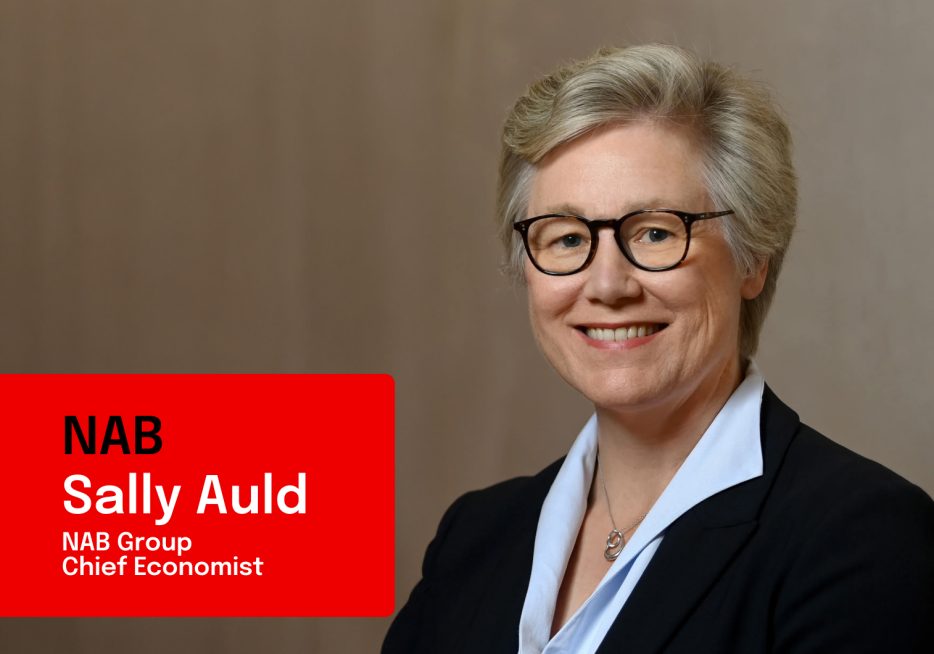We hear from NAB Group Chief Economist, as she shares her latest economic update. Watch now.


Vision Australia has come up with an innovative approach to fundraising – equipping Ambassador Seeing Eye Dogs with Tap and Pay devices.
The rattle of a donation tin has many of us patting our pockets for spare change but Seeing Eye Dogs Australia is hoping a new high-tech fundraising initiative will see more Australians dig even deeper.
Seeing Eye Dogs Australia (SEDA) is a division of Vision Australia, a national charity employing more than 700 people, which is dedicated to assisting Australians who are blind or have low vision, live independent lives.
Its fundraising team of 24 is responsible for attracting $42 million a year in donations, via direct marketing, product sales, corporate events and relationships, bequests and community appeals.
This figure represents about half the sum needed to cover the spread of services Vision Australia offers to 27,5000 people each year.
It takes two years and costs $50,000 to raise and train a Seeing Eye dog. There are around 40 candidates in advanced training at Vision Australia’s national facility in Melbourne at any given time.There are close to 80 dogs in their facility and approximately 130 pups in the puppy program.
The majority of the funds raised for the SEDA program come from private and corporate donations. Competition for Australia’s charity dollars is stiff and ensuring the organisation raises enough money to keep operating at capacity is a perennial challenge.
Ambassador Seeing Eye dogs, which have undergone training but been deemed unsuitable for use as a Seeing Eye Dog, are a popular feature of the organisation’s community and fundraising events.
Now, with the addition of jackets fitted with Tap and Pay devices, they’ve become ‘Donation Dogs’ – canine collectors which can work the room soliciting vital funds for the dog training program.
The Donation Dogs initiative was the brainchild of Vision Australia sponsorship manager Renee Jess, who was inspired by a proposal to add Tap and Pay facilities to the life-sized Seeing Eye Dog collection boxes located in airports and shopping centres.
NAB and Quest Payment Systems worked with Seeing Eye Dogs to source and fit the devices to the dogs’ custom-made Seeing Eye Dog jackets. Royal Canin, one of SEDA’s major partners, funded the introduction of the first Donation Dogs. Each payment device is linked to a mobile phone carried by the dog’s handler, who can enter a donation amount and email or SMS a receipt on the spot.
“So now we’ve got dogs which can go out to various events, people can nominate the amount they want to donate and they can Paywave, make a donation and pat the dog at the same time,” Jess says.
The Donation Dogs made their debut at Vision Australia’s showcase fundraiser, the annual Vision Australia Carols by Candlelight on Christmas Eve, and were wagging their way through the crowds at Seeing Eye Dogs’ Victorian Open Day in March.
“Expect to see them out and about more often, as the initiative expands”, says Jess, who worked closely with her specialist business bankers at NAB to turn her innovative idea into a fundraiser which marries timeless animal appeal with up-to-the-minute contactless payment technology.
“It’s innovative because the technology has never been used in this way before, but it’s also quite engaging because we’ve got the dogs walking around taking donations,” Jess says.
“We’re becoming a cashless society, so a lot of the time people don’t have cash on them, but that doesn’t mean they’re not interested. Once we talk to them and tell them what we’re doing with the dogs, typically, they’ll donate. The average donation to the Donation Dog is $18. Total donations collected over the two events have exceeded $5000.”
In addition to attending Seeing Eye Dog fundraisers, Vision Australia is hoping the Donation Dogs will be invited along to external functions and events.
Vision Australia’s other less high profile services for people who are blind or have low vision include an orientation mobility service to help them familiarise themselves with regular travel routes and learn to use the white cane.
It also runs a variety of reskilling and employment programs, offers bursaries to help with the cost of education-related technology items and provides access to a talking book library.
The organisation is expecting its government funding to be reduced following the rollout of the National Disability Insurance Scheme (NDIS) and is preparing to step up its fundraising efforts to cover the shortfall.
“Not all of Vision Australia’s clients will be eligible for NDIS funding,” Jess says.
“We’re aiming to fund services to the clients that Vision Australia currently services as well as new referrals, which means our fundraising targets have to increase in the next couple of years.”
More from NAB:
© National Australia Bank Limited. ABN 12 004 044 937 AFSL and Australian Credit Licence 230686.